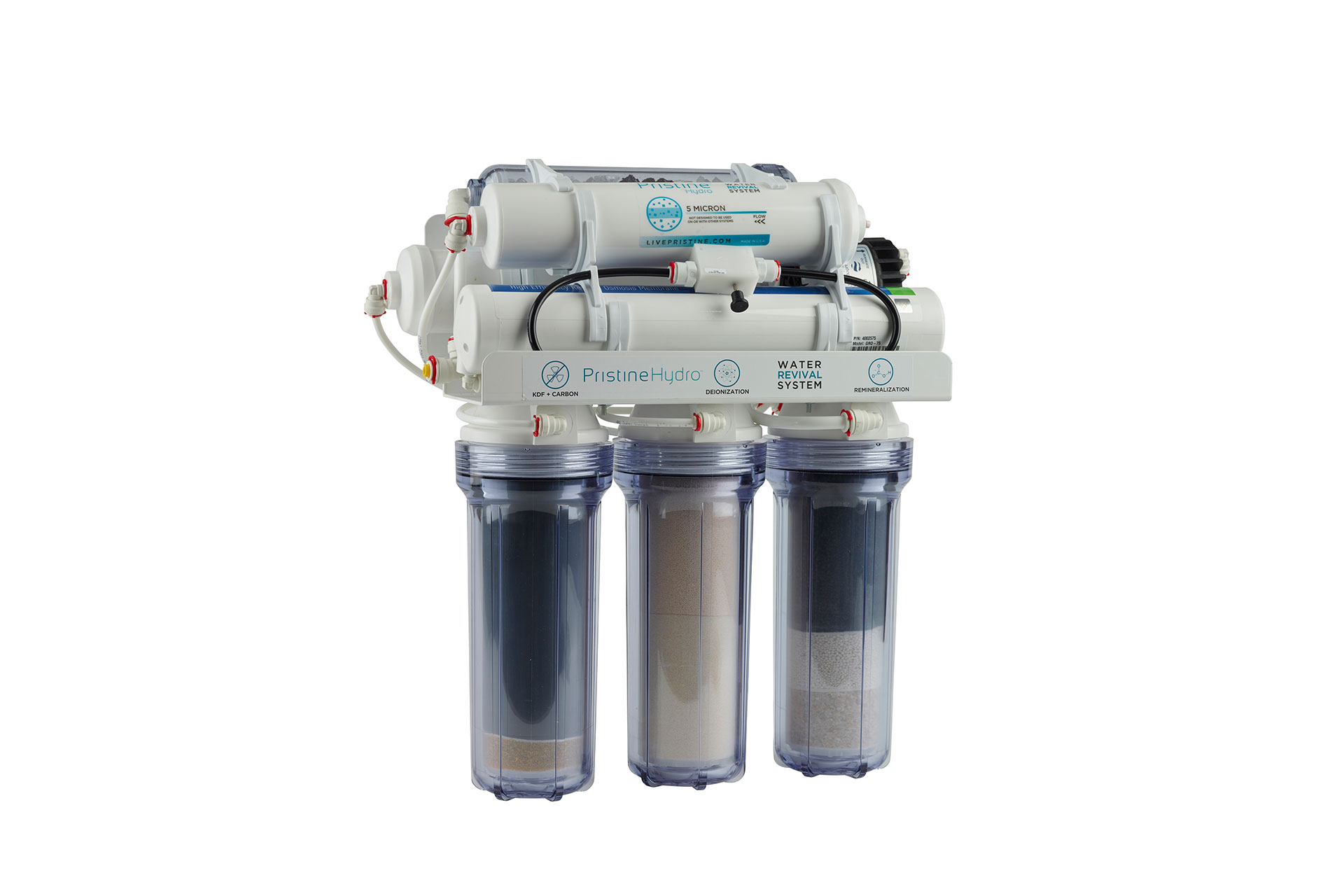How much do you really know about the water you should be drinking? You probably have plenty of questions – and fortunately, we have all the answers.
In fact, we’ve decided to condense everything anyone would EVER need to know about water filtration systems into one quick and easy read.
When researching water filtration systems, especially websites and other marketing materials, there are 8 things you should always seek to know:
| 1) Do they completely remove invasive acids? 2) What is the alkalinity of the water? 3) How do they achieve the alkalinity claimed? 4) What is the TDS (total dissolved solids) concentration value? 5) What minerals do they use to achieve the TDS? 6) Do they have third-party laboratory analyses available on request? 7) Does the water contain minerals in bicarbonate form? 8) Is the water 100% free of all undesirable contaminants? |
Q: Do they completely remove invasive acids?
A: The addition of any kind of chlorine to water creates hydrochloric and hypochlorous acids. The type of fluoride added to our municipal water supply is not sodium fluoride; it is hydrofluorosilicic acid (industrial waste fluoride). Chlorine and bromine react to create haloacetic acids. The addition of chloramine to water reacts to create five ido-acids. When chloramine combines with hydrofluorosilicic acid it creates ammoniafluorosilicic acid, which is so corrosive that it will leech lead from plumbing systems. This is on top of the sulfuric and nitric acids, the two main components of acid rain. If your filtration system does not remove these invasive acids, you will drink them – NOT GOOD! Our proprietary selective Dual Deionization process captures all these invasive acids that make their way through traditional water filter systems, such as reverse osmosis.
Q: What is the alkalinity of the water?
A: “Alkaline Water” has become the latest marketing buzz word for bottled water and water filtration system companies. What consumers don’t understand is that you can “alkalize” dirty water by just adding certain metals to the water. In other words, saying a water is “alkaline” does NOT necessarily mean the water (1) has any buffering capacity, (2) has substantial alkalinity, (3) is 100% free of contaminates, or (4) is free of all invasive acids. The tap water here at our headquarters in Laguna Woods, CA is even alkaline; it has a pH of around 8 but it is still loaded with invasive acids and other contaminates!
| Water produced from PristineHydro’s Water RevivalSystem has a high-alkaline pH of approximately 9.8. |
Q: How do they achieve the alkalinity claimed?
A: Water ionizers use a process known as electrolysis to take all the acid out of tap water, which basically just produces acid-free tap water. This process even removes the beneficial silicic acid, a bio-available form of silica highly beneficial to your health. Most people also do not know that the quality of the product water that ionizers produce is completely dependent on the source water quality! Check the ppm of the source water and the product water, it’s virtually the same. Sometimes the TDS is even higher because of the buildup of harmful hard minerals inside the machine! Alkaline water ionizers are not water filters. The quality of water they produce falls short of pristine, but they are often marketed with great success.
Q: What is the TDS (total dissolved solids) concentration value?
A: Once PristineHydro’s Water Revival System is broken in, the produced water’s TDS is low, approximately 20-60 parts per million, which is similar to the chemistry of fresh high-elevation natural spring water.
| Don’t let the parts per million (ppm) be parts per mystery! It’s important to know what the total value is and what it consists of. |
Q: What alkaline minerals do they use to achieve the TDS?
A: The TDS in PristineHydro water constitutes the magnesium bicarbonate the
system puts back in once all undesirable ions have been removed. There are
also traces* of calcium and sodium bicarbonate as well as silica and chloride.
*Trace minerals as well as their values will vary with various source water chemistry.
Q: Do they have third-party laboratory analyses available on
request?
A: A thorough lab analyses will show you exactly what is in the water and what is non-detectable. Look for beneficial ions like bicarbonate, sodium, magnesium, chloride, silica, etc…
Stay away from heavy metals like arsenic, cadmium, lead, mercury, and other undesirable contaminants.
You can view our most recent report anytime here:
https://livepristine.com/wrs_lab_analysis
We have nothing to hide and we regularly update the report as well!
| CHALLENGE:If you can find a better lab report, please share it with us!We would love to have the opportunity to compare. |
Q: Does the water contain minerals in bicarbonate form?
A: The alkaline minerals found in natural pristine drinking waters are calcium, magnesium, potassium, and sodium bicarbonate electrolyte salts (calcium and magnesium bicarbonate are complex hydrated salts that only exist in liquid form). These beneficial ions are nature’s electrolyte salts and they occur in fresh pristine drinking water.
Q: Is the water 100% free of all undesirable contaminants?
A: Traditional Reverse Osmosis (RO) water filters reduce contaminates, they do not bring them down to non-detectable levels. Additionally, they do not address acids, which are liquids and gases that pass through the semi-permeable membrane in a RO system. Pure RO water is unstable, it is known as aggressive (hungry) water. If you run pure RO water through your house it will eat into copper, lead and galvanized pipes. Just imagine what drinking acidic water without alkalizing minerals will do to your body…?
| There must be sufficient alkaline minerals in the water we drink; it has to be free of invasive harmful acids and contaminants! |




